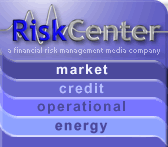Global Ethanol Market Could Keep Booming Even Better
Location: New York
Author:
Larry Swasey
Date: Thursday, May 3, 2007
The markets for ethanol fuel and fuel additives have been growing at double digit rates the past half decade and will expand by at least sixty percent during the next five years, according to a new Visant Strategies report.
“The fuel additive and alternative fuel industries are in a very good growth phase that could mean greater increases in ethanol use if everything falls into place,” said report author Dan Sweeney. “This includes being able to produce as much ethanol feedstock as needed, having processing techniques improve to create better efficiencies and being able to build an infrastructure for transporting large amounts of ethanol.”
According to Ethanol Fuel Markets 2007, a full ten-fold increase in the use of ethanol worldwide is possible during the next ten years if ethanol replaces MBTE as the preferred oxygenate in gasoline. “There are still chasms the ethanol industry and those industries related to its success must cross before this occurs,” Sweeney said.
The report examines these chasms and the economic and political drivers behind the ethanol boom, the economic underpinnings of the industry and the sensitivity of ethanol producers to price volatility in the pricing of petroleum and grain. Also examined are established and emerging ethanol feedstocks, tenured and newer production techniques including cellulosic ethanol processing, and the distribution and marketing of ethanol.
Ethanol is also examined in a competitive context, comparing its price, availability, and performance attributes with other alternative fuels including synfuels, heavy alcohols, biodiesel, and hydrogen and how it will be used within the various transportation segments.
Given through 2012 of the amount of ethanol feedstocks, such as corn, grain and sugar, produced yearly and conservative and aggressive estimates of the amount of ethanol to be used worldwide. The report details, among other figures, global oil production through 2012 as well as the amount of petroleum, synfuels, methane and other fuel products to be consumed through the years and the number of internal combustion engine vehicles running on Hydrogen through 2016.

To subscribe or visit go to: http://www.riskcenter.com